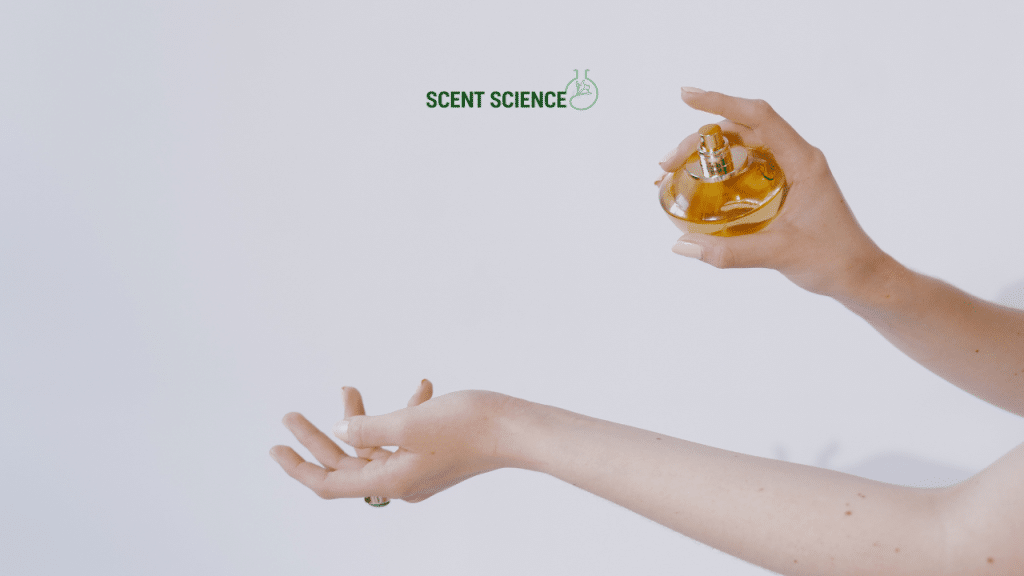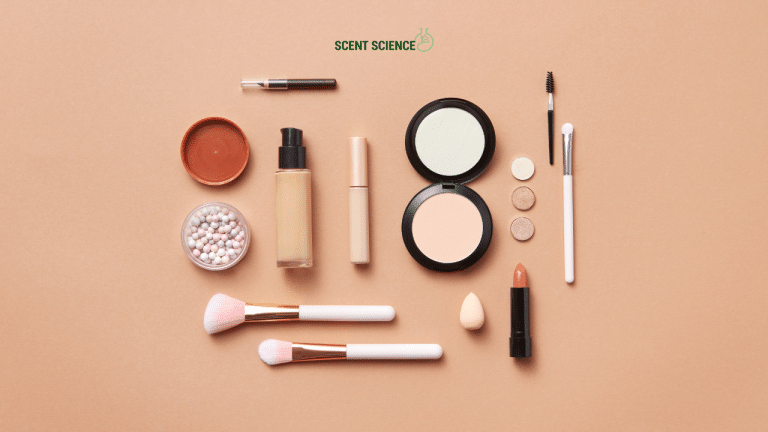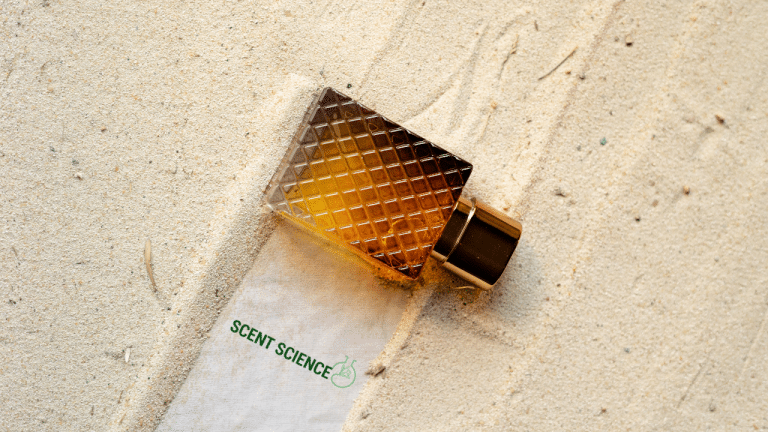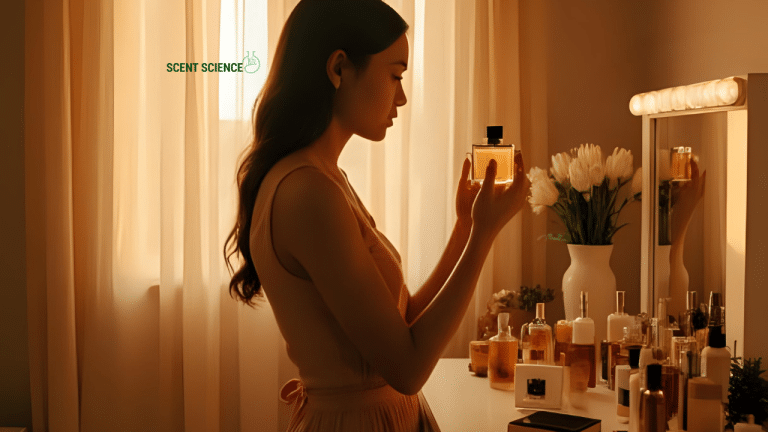Most people layer fragrances completely wrong, creating muddy, overwhelming scents. Here’s the chemistry behind combinations that actually work.
The mistakes everyone makes:
- Mixing too many competing notes
- Ignoring fragrance families and chemical structures
- Fragrance Layering at the wrong concentrations
- Not understanding how scents interact on your skin
- Following influencer trends instead of science
What you’ll master:
- The exact chemistry rules for successful layering
- Which fragrance families actually complement each other
- How to create signature scents that last all day
- Professional perfumer techniques for beginners
- Simple formulas for foolproof combinations
Ready to create scent combinations that make people ask “What are you wearing?”
Table of Contents
ToggleThe Chemistry Basics: Why Some Scents Work Together
What’s Really Happening When You Layer
Your brain’s fragrance reaction:
- Light molecules (citrus, herbs) evaporate first (top notes)
- Medium molecules (florals, spices) emerge next (heart notes)
- Heavy molecules (woods, musks) last longest (base notes)
- Successful layering respects these natural timelines
- Competing molecules in the same weight class create chaos
The key insight: Layer different molecular weights to create a harmonious progression, not a scent war.
Chemical Families and Compatibility
Why some combinations smell amazing:
- Similar chemical structures enhance each other
- Complementary molecules fill gaps in scent profiles
- Opposing structures can cancel each other out
- Natural synergies exist between certain fragrance families
- pH levels affect how scents blend on your skin
Simple rule: Fragrances with shared chemical components layer better than completely unrelated scents.
The 5 Golden Rules of Fragrance Layering Chemistry
Rule #1: Respect the Pyramid Structure
How to layer by fragrance notes:
- Start with your base note fragrance (woods, musks, amber)
- Add heart notes that complement (florals, spices)
- Finish with top notes for sparkle (citrus, herbs)
- Never layer two base-heavy fragrances
- Avoid competing top notes that fight for attention
Pro tip: Think of layering like building a house—foundation first, decoration last.
Rule #2: Follow the 60-30-10 Concentration Rule
Getting the proportions right:
- 60% of your scent should be your base fragrance
- 30% your complementary middle layer
- 10% your accent or top note enhancer
- More than three layers usually creates chaos
- Less dominant scents need lighter application
Application method: 3 sprays of base, 2 sprays of middle, 1 spray of accent.
Rule #3: Match Fragrance Families
Compatible chemical families:
- Woody + Oriental: Natural cedar/sandalwood with vanilla/amber
- Fresh + Floral: Citrus with light florals like peony or lily
- Spicy + Gourmand: Cardamom/cinnamon with vanilla or caramel
- Green + Aquatic: Herbal notes with marine or ozone scents
- Fruity + Floral: Berry or peach with jasmine or rose
Avoid these combinations: Heavy orientals + fresh aquatics, gourmands + green herbs, competing florals.
Rule #4: Consider Skin Chemistry
How your body affects scent blending:
- Oily skin amplifies and changes fragrances faster
- Dry skin makes scents fade quicker but blend more predictably
- Your natural pH affects how scents develop
- Body temperature changes how molecules interact
- Diet and hormones influence scent chemistry
Personal testing: What works on others might not work on you—always test combinations on your own skin.
Rule #5: Time Your Application
When and where to apply layers:
- Apply base fragrance first, wait 5 minutes
- Add complementary layer to different pulse points
- Save accent notes for clothing or hair
- Reapply lighter notes throughout the day
- Avoid over-layering in small spaces
Beginner-Friendly Fragrance Layering Combinations That Always Work
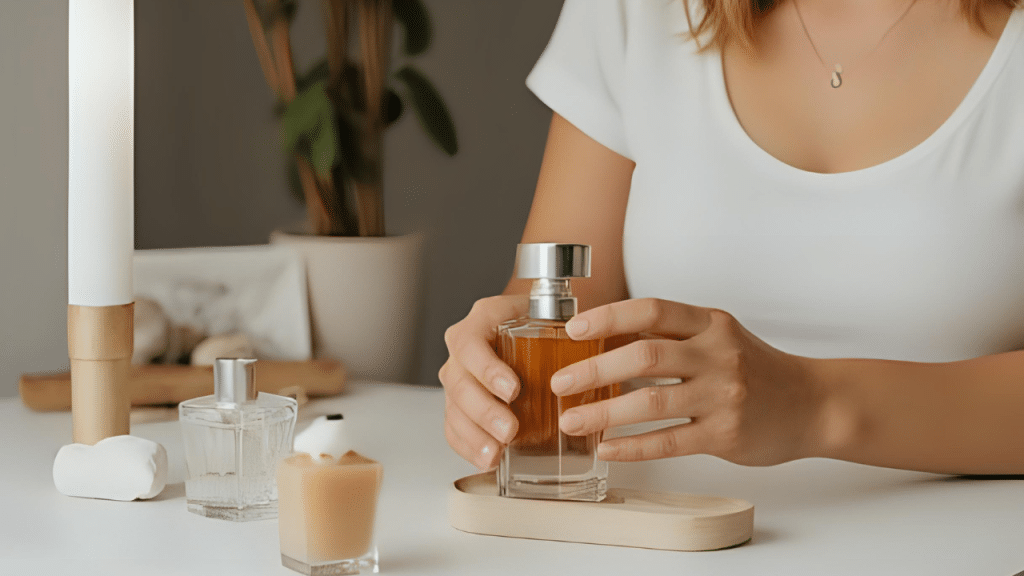
The Classic Fresh Combination
Citrus + White Floral + Light Musk:
- Base: Light musk or clean cotton scent
- Heart: Jasmine, lily of the valley, or white tea
- Top: Bergamot, lemon, or grapefruit
- Why it works: Molecules complement without competing
- Best for: Daytime wear, office environments, summer
Example products: CK One + Marc Jacobs Daisy + Acqua di Gio
The Sophisticated Evening Blend
Vanilla + Rose + Oud:
- Base: Warm vanilla or tonka bean
- Heart: Bulgarian rose or rose otto
- Accent: Tiny amount of oud or sandalwood
- Why it works: Traditional Middle Eastern perfumery combination
- Best for: Date nights, special occasions, cool weather
Example products: Vanilla Lace + Rose 31 + Tom Ford Oud Wood
The Modern Unisex Mix
Bergamot + Lavender + Cedar:
- Base: Cedarwood or cypress
- Heart: French lavender
- Top: Earl Grey bergamot
- Why it works: Aromatherapy-inspired, naturally harmonious
- Best for: Workplace, casual wear, stress relief
Example products: Diptyque Philosykos + L’Occitane Lavender + Hermès Terre d’Hermès
The Gourmand Comfort Combination
Coffee + Vanilla + Cardamom:
- Base: Rich vanilla or benzoin
- Heart: Coffee bean or chocolate
- Accent: Cardamom or cinnamon
- Why it works: Natural food flavor combinations
- Best for: Cozy weather, casual settings, coffee lovers
Example products: Black Opium + Vanilla Fields + By the Fireplace
Advanced Layering Techniques from Professional Perfumers
The Skin Scent Method
Creating your signature “my skin but better” scent:
- Choose a base that mimics your natural skin scent
- Add one complementary note that enhances your chemistry
- Use minimal amounts for subtle, intimate projection
- Test combinations over several days
- Adjust ratios based on how your skin develops them
Pro secret: The best layered scents smell like they’re coming from your skin, not sitting on top of it.
The Seasonal Rotation System
Adapting your signature combination for weather:
- Summer: Reduce base notes, increase fresh top notes
- Winter: Amplify warm base notes, add spices
- Spring: Focus on florals and green notes
- Fall: Incorporate gourmand and woody elements
- Keep core identity while adjusting intensity
The Longevity Hack
Making layered scents last longer:
- Apply fragrance-free moisturizer first
- Use matching body products as base layers
- Apply oils before alcohol-based fragrances
- Layer stronger scents on clothing, lighter on skin
- Reapply only the top notes that fade first
Chemistry fact: Layered fragrances often last longer because different molecules evaporate at different rates, creating continuous scent release.
Common Layering Mistakes and How to Fix Them
The “Muddy Mess” Problem
When layered scents smell unclear:
- Cause: Too many competing notes in the same family
- Solution: Choose one dominant fragrance, use others as accents
- Prevention: Test combinations on skin, not paper strips
- Fix: Reduce the number of layers and simplify
The “Overwhelming Cloud” Issue
When people smell you before they see you:
- Cause: Using too much product or incompatible concentrations
- Solution: Follow the 60-30-10 rule strictly
- Prevention: Apply to pulse points only, not clothing
- Fix: Blot excess with unscented lotion
The “Disappearing Act” Dilemma
When layered scents fade too quickly:
- Cause: All light molecules with no base anchoring
- Solution: Always include a base note fragrance
- Prevention: Use fragrance primers or matching body products
- Fix: Reapply strategically throughout the day
The “Chemical Reaction” Disaster
When scents smell terrible together:
- Cause: Incompatible chemical families
- Solution: Stick to proven fragrance family combinations
- Prevention: Test small amounts before full application
- Fix: Wash off and start over—some combinations can’t be saved
Building Your Personal Layering Collection

Essential Base Fragrances
The building blocks for any collection:
- Clean musk: Versatile neutral base for any combination
- Vanilla/amber: Warm base for evening and cool weather
- Light woods: Cedar or sandalwood for sophistication
- Fresh white florals: Jasmine or lily for feminine touches
- Citrus blend: Bergamot or grapefruit for brightness
Budget tip: Start with one good base fragrance and build around it.
Versatile Accent Scents
Small bottles that transform your signatures:
- Single-note fragrances (rose, vanilla, oud)
- Essential oil roll-ons for natural layering
- Travel-size designer fragrances for testing
- Indie perfume samples for unique accents
- Body oils that blend well with alcohol-based perfumes
Testing and Discovery Strategy
How to find your perfect combinations:
- Buy samples before full bottles
- Test combinations over multiple days
- Keep a fragrance journal with successful blends
- Ask for opinions from trusted friends
- Consider professional fragrance consultations
Investment approach: Quality over quantity—5 great layering pieces beat 20 random fragrances.
Seasonal Layering Formulas
Spring Fresh Combinations
Light, optimistic, and clean:
- Green tea + white peach + soft musk
- Lily of the valley + cucumber + white amber
- Pink grapefruit + peony + light cedar
Summer Vibrant Blends
Energizing and heat-appropriate:
- Coconut + lime + marine breeze
- Watermelon + mint + white tea
- Tropical fruits + jasmine + bamboo
Fall Cozy Formulas
Warm, comforting, and sophisticated:
- Apple + cinnamon + sandalwood
- Fig + brown sugar + cashmere musk
- Pumpkin + cardamom + vanilla
Winter Luxurious Layers
Rich, enveloping, and memorable:
- Dark chocolate + orange + oud
- Pine + vanilla + amber
- Mulled wine spices + rose + cedar
Seasonal tip: Adjust your signature combination rather than completely changing it to maintain your scent identity.
Frequently Asked Questions About Fragrance Layering
Q: How many fragrances can I layer without it being too much?
A: Three is the sweet spot. More than that usually creates confusion rather than complexity.
Q: Should I layer fragrances from the same brand?
A: Not necessarily. Focus on compatible scent families rather than brand loyalty.
Q: Can I layer expensive and drugstore fragrances together?
A: Absolutely. Price doesn’t determine compatibility—chemistry does.
Q: How long should I wait between applying different layers?
A: Wait 5-10 minutes between applications to let each layer settle before adding the next.
Q: Should I layer on the same pulse points or different ones?
A: Use different pulse points to create complexity and prevent overwhelming any one area.
Q: Can layering damage my skin?
A: As long as you’re not allergic to individual components, layering is safe. Test combinations first.
Explore our website scentsciencebeauty.com and read more about Fragrance Science and Beauty Technology Trends.
Follow us on Social Media for more!
Because your skin deserves products that actually help, not hurt.

